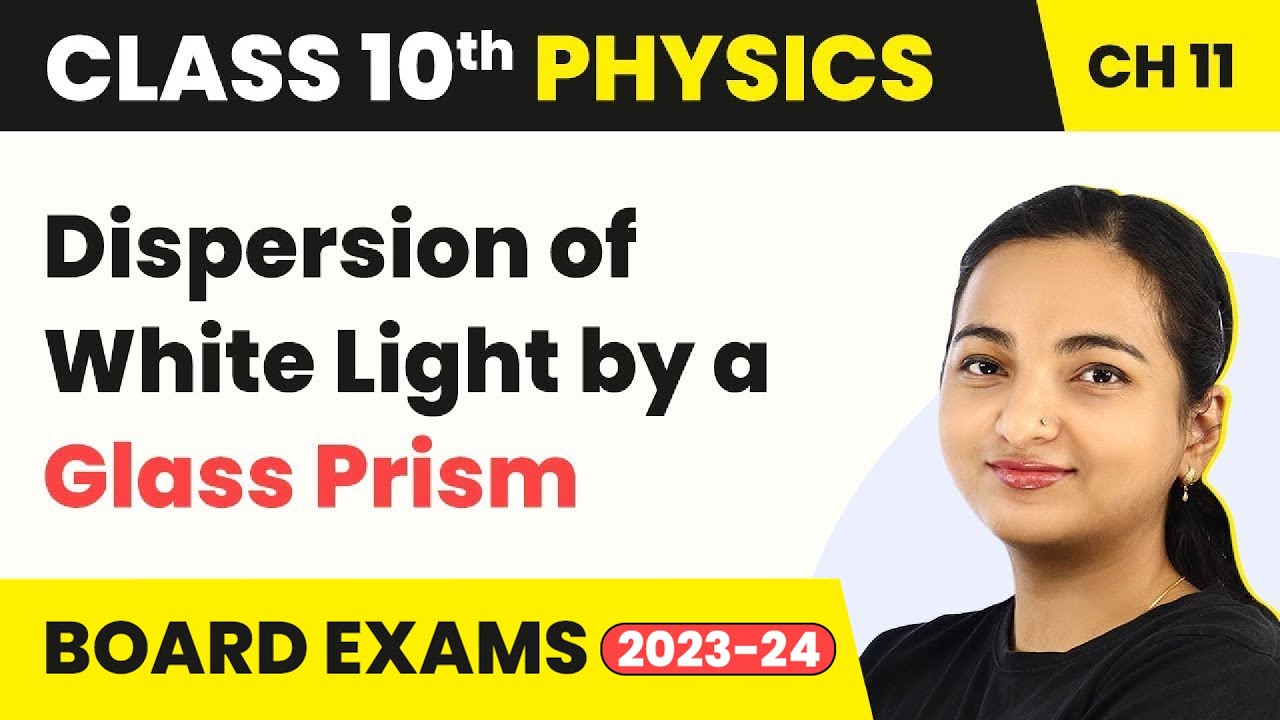Dispersion of Light
Summary
TLDRIn this exciting video, we explore the fascinating world of light dispersion and the spectrum using a color-changing magic bulb. Through engaging experiments with colored lights and blocks, we demonstrate how different colors of light reflect and absorb, revealing the principles of light behavior. We delve into the dispersion of white light into its constituent colors using a prism, explain how rainbows form through dispersion and total internal reflection, and conclude with key concepts and interactive questions. Join us for a colorful journey into the science of light!
Takeaways
- 💡 The video introduces an experiment using a 'magic' lightbulb that can change colors through an app on a phone.
- 🌈 It demonstrates light dispersion by showing how objects appear under different colored lights, explaining that objects reflect light that matches their color and absorb others.
- 🔴 The red block appears red under red light but black under green and blue light, illustrating the concept of light absorption and reflection.
- 🟢 Similarly, the green and blue blocks are shown to reflect their respective colors and absorb others, appearing black under non-matching light.
- 💡 The conclusion is that an object reflects light that matches its color and absorbs all other colors, which is why they appear differently under various lights.
- 🌟 White light is revealed to contain millions of colors, not just the simplified seven colors of the rainbow (VIBGYOR).
- 🎨 The script explains that different colors of light have different frequencies, similar to how different sounds have different frequencies.
- 📐 The dispersion of white light is shown through the use of a glass prism, which splits white light into its constituent colors, forming a spectrum.
- 🌈 The natural phenomenon of a rainbow is discussed as an example of light dispersion, formed by raindrops acting as tiny prisms.
- 🔍 The process of refraction and total internal reflection within a raindrop is explained to describe how a rainbow's colors are formed.
- 🔄 The video suggests that placing an inverted second prism after the first can recombine the dispersed colors back into white light.
Q & A
What is the main purpose of the video?
-The main purpose of the video is to educate viewers on the concept of light dispersion, the colors of light, and the spectrum, using an interactive experiment with a magic lightbulb and colored blocks.
How does the magic lightbulb work?
-The magic lightbulb can change colors using an app on the presenter's phone, allowing the viewer to see how different colors of light affect the appearance of objects.
Why do the red, green, and blue blocks appear black under a color of light that doesn't match their own?
-Objects appear black under a color of light that doesn't match their own because they absorb that color of light and do not reflect it back to the viewer.
What is the conclusion of the experiment with the colored blocks and the magic lightbulb?
-The conclusion is that an object reflects light that matches its color and absorbs all other colors of light, which is why objects appear different colors under different colored lights.
What does the script tell us about white light?
-White light is not actually white; it contains millions of colors, including the three primary colors red, green, and blue, which can be seen when white light is dispersed.
How does the frequency of light waves relate to the colors of light?
-Different colors of light have different frequencies. For example, red light has a different frequency from green light, and this variation in frequency results in the different colors we see.
What is the phenomenon called when white light is split into its constituent colors?
-The phenomenon is called dispersion of light, and the resulting band of colors is known as the spectrum.
Why do we see a rainbow in the sky but not always?
-A rainbow is formed when sunlight is dispersed by raindrops, which act like tiny prisms. It is rare because it requires both rain and sunshine at the same time, and it only lasts for a short period.
What is the role of refraction in the dispersion of light through a prism?
-Refraction is the bending of light as it passes from one medium to another, such as from air to glass. Different colors of light bend at different angles due to their different speeds in the medium, leading to the dispersion of white light into its constituent colors.
Why do we see a rainbow near a waterfall, and how is it formed?
-A rainbow is always visible near a waterfall because the constant presence of water droplets provides the necessary conditions for dispersion of sunlight. The raindrops act as prisms, splitting white light into its constituent colors through refraction and total internal reflection.
What happens when a second inverted prism is placed after the first one in the experiment?
-When a second inverted prism is placed after the first one, the dispersed colors of light are recombined back into white light, demonstrating that white light contains the seven colors of the spectrum.
Outlines

此内容仅限付费用户访问。 请升级后访问。
立即升级Mindmap

此内容仅限付费用户访问。 请升级后访问。
立即升级Keywords

此内容仅限付费用户访问。 请升级后访问。
立即升级Highlights

此内容仅限付费用户访问。 请升级后访问。
立即升级Transcripts

此内容仅限付费用户访问。 请升级后访问。
立即升级浏览更多相关视频

Why questions for kids: How do we see colour? Light and colour science. Physics for children

F486-Dispersi cahaya ,teori plus contoh soal

Dispersion of White Light by a Glass Prism - The Human Eye and the Colorful World | Physics

ESPECTRO DE CORES - O que é luz? | Física ep.2

Cómo hacer un bombillo con una copa ¿Funcionará? Aquí te cuento

Physics - What is light? Refraction, reflection and absorption of light.
5.0 / 5 (0 votes)
